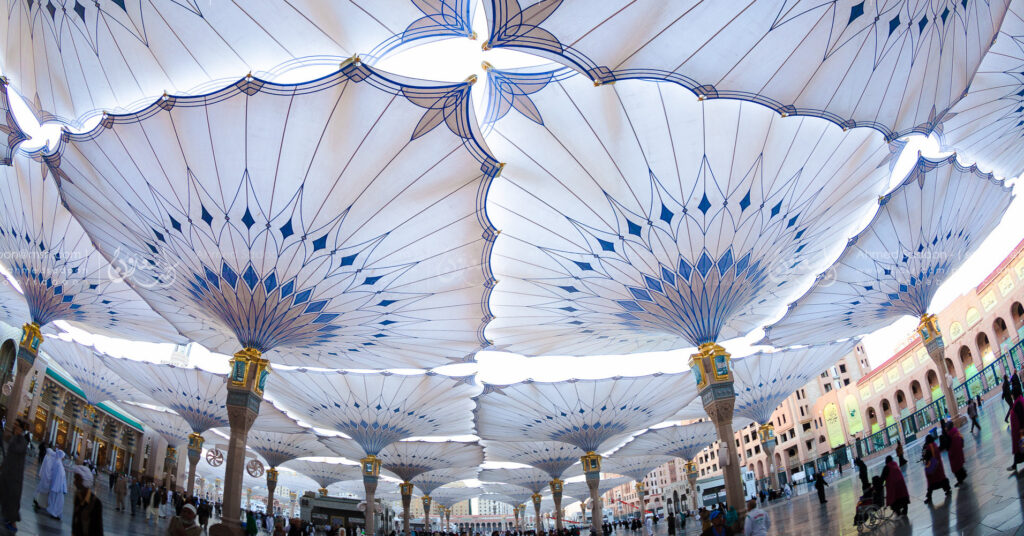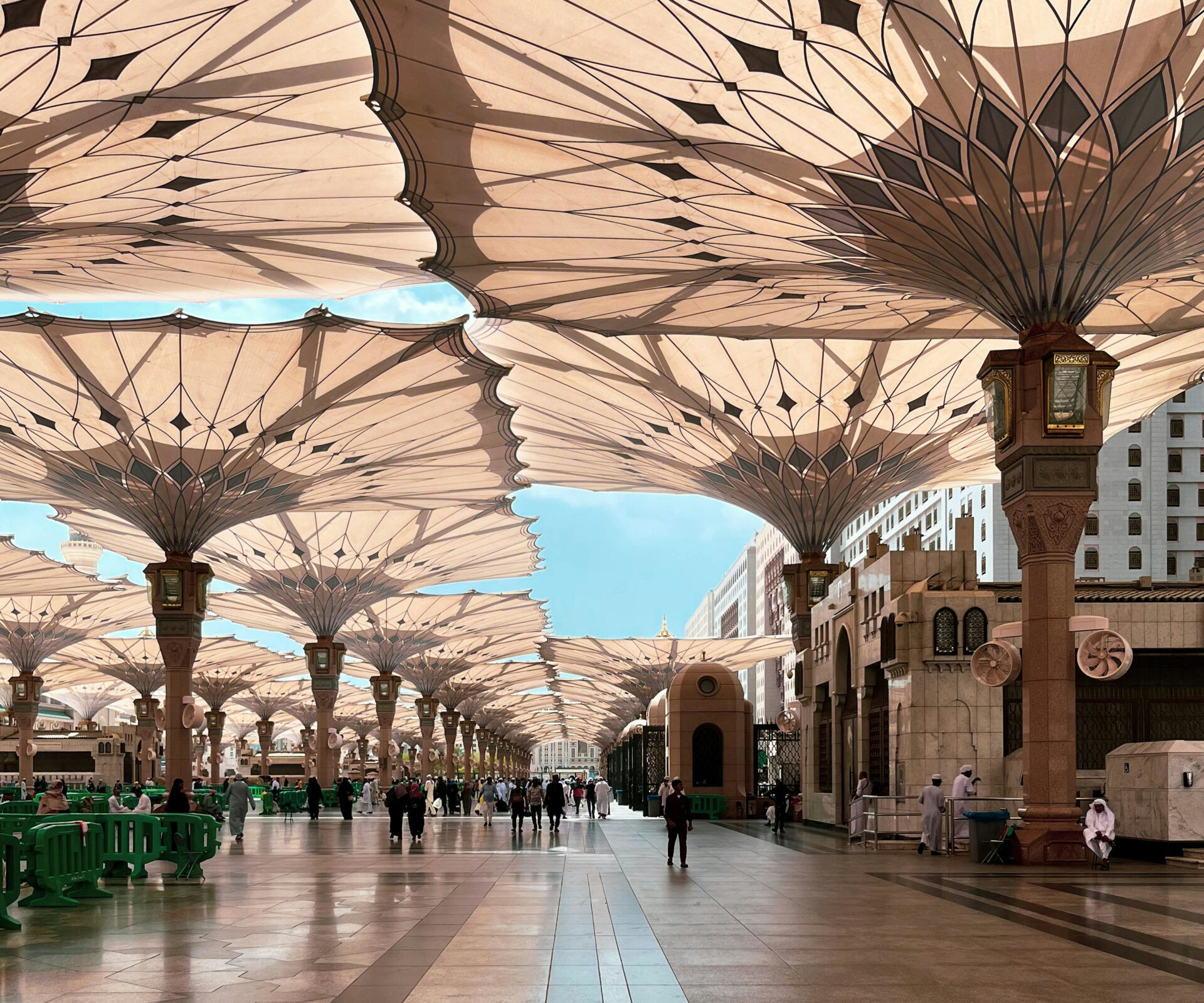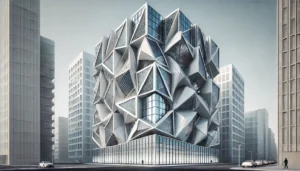Key Takeaways
- The Medina umbrellas are a marvel of modern engineering, blending advanced materials, precision control systems, and meticulous design to create a functional and visually stunning shading solution.
- The umbrellas’ design pays homage to Islamic art and architecture, seamlessly integrating traditional motifs and color schemes to create a harmonious and spiritually-elevating experience for the pilgrims.
- By dramatically reducing temperatures and creating a comfortable, shaded environment, the umbrellas have significantly enhanced the physical and spiritual well-being of the millions of pilgrims who visit the Medina Haram Piazza each year.
- The success of the Medina umbrellas has set a new benchmark for large-scale shading systems, inspiring architects and engineers worldwide to explore the possibilities of foldable and responsive architecture.
- The umbrellas’ use of durable, low-maintenance materials and potential for integrating renewable energy sources points to a future where folding technology can contribute to more sustainable and adaptable built environments.
In the heart of Medina, Saudi Arabia, a remarkable feat of engineering and design has forever transformed the experience of millions of devout pilgrims who visit the Al-Masjid an-Nabawi, the Prophet’s Mosque. Towering over the vast Medina Haram Piazza, a network of massive folding umbrellas stands as a testament to the seamless integration of cutting-edge technology and deep cultural respect.
These engineering marvels, conceived under the visionary leadership of King Abdullah bin Abdul Aziz, were born out of a pressing need to protect the pilgrims from the scorching Arabian sun. Yet, they have evolved into so much more than just functional structures – they have become symbols of the Islamic faith’s ability to embrace modern innovation while preserving its timeless traditions.
Table of Contents
Engineering Brilliance: Bringing the Umbrellas to Life
Designing and constructing these colossal umbrellas was no easy feat. The project team, led by the renowned German architectural firm SL Rasch GmbH, faced a daunting set of challenges. The umbrellas needed to be large enough to cover the expansive Medina Haram Piazza, which spans an impressive 143,000 square meters – larger than the mosque itself. At the same time, they had to be durable enough to withstand the harsh desert environment, with its intense heat, powerful winds, and relentless UV radiation.
The solution came in the form of a specialized PTFE (polytetrafluoroethylene) fabric, developed specifically for this project by SEFAR Architecture. This cutting-edge material not only boasts exceptional resistance to UV radiation and impressive tensile strength but also maintains its structural integrity and performance over time, even under the most demanding conditions.
But the engineering marvel goes far beyond the fabric choice. Each umbrella is equipped with a sophisticated control system, designed by the renowned German manufacturer Liebherr, that allows for the seamless deployment and retraction of these massive structures in just three minutes. The synchronized movement of the 250 umbrellas is a sight to behold, a true demonstration of precision engineering at its finest.
Respecting Cultural and Spiritual Traditions
While the engineering prowess behind the Medina umbrellas is undoubtedly impressive, their design also reflects a deep sensitivity to the cultural and spiritual context of the Al-Masjid an-Nabawi. The umbrellas were not merely conceived as functional structures; they were envisioned as an extension of the sacred architecture, enhancing the pilgrim’s experience in ways that go beyond physical comfort.
The underside of each umbrella features intricate blue patterns inspired by traditional Islamic art, symbolizing the spiritual journey of the pilgrims. These patterns, carefully woven into the PTFE fabric, create a captivating visual experience that complements the serene atmosphere of the mosque. The choice of a sand-colored exterior, meanwhile, ensures that the umbrellas blend seamlessly with the surrounding landscape, respecting the natural tones and ambiance of the sacred site.
But the attention to cultural details doesn’t stop there. The elegant columns that house the umbrellas when closed echo the architectural style of the mosque, ensuring a harmonious integration between the modern shading structures and the historic religious complex. This meticulous consideration of the cultural and spiritual context sets the Medina umbrellas apart as more than just engineering marvels – they are works of art that honor the rich heritage of Islamic design.

Enhancing the Pilgrim Experience
The true impact of the Medina umbrellas can be seen in the profound transformation of the pilgrim experience. For the millions who visit the Al-Masjid an-Nabawi each year, the shaded piazza has become a sanctuary of comfort and spiritual focus, allowing them to immerse themselves in their religious practices without the hindrance of extreme weather conditions.
The umbrellas’ ability to reduce the ambient temperature by 8-14°C (14-25°F) is a game-changer, especially during the sweltering summer months. This dramatic cooling effect not only enhances the physical well-being of the pilgrims but also creates an environment that is more conducive to prayer and reflection. The soft, diffused light filtering through the PTFE fabric further contributes to the serene atmosphere, ensuring that the pilgrims can connect with their faith without distractions.
But the impact of the Medina umbrellas goes beyond just physical comfort. They have become a symbol of the care and attention given to the well-being of the pilgrims, reinforcing the sense of community and shared purpose that is central to the pilgrimage experience. The sight of the open umbrellas has become synonymous with the Medina Haram Piazza, a visual cue that represents the integration of modern innovation with the timeless traditions of Islam.
Inspiring a Global Revolution in Foldable Architecture
The success of the Medina Haram Piazza umbrellas has not only transformed the pilgrim experience in Medina but has also set a new global standard for large-scale shading systems and foldable architecture. Their innovative design and engineering have captured the attention of architects, designers, and engineers worldwide, inspiring them to explore new possibilities in responsive and adaptable structures.
From retractable stadium roofs to deployable emergency shelters, the principles and technologies behind the Medina umbrellas are now being adapted and refined for a variety of applications. The integration of smart materials and renewable energy sources, such as solar panels, could further enhance the sustainability and versatility of these structures, paving the way for a future where buildings and public spaces can dynamically respond to their environment.
As the world grapples with the challenges of climate change and the growing demand for efficient, adaptable, and culturally-sensitive design, the Medina Haram Piazza umbrellas stand as a shining example of what can be achieved when innovation is guided by a deep respect for tradition and the needs of the community. This architectural marvel has not only transformed the pilgrim experience in Medina but has also set the stage for a future where folding technology can seamlessly merge function, form, and cultural significance.




